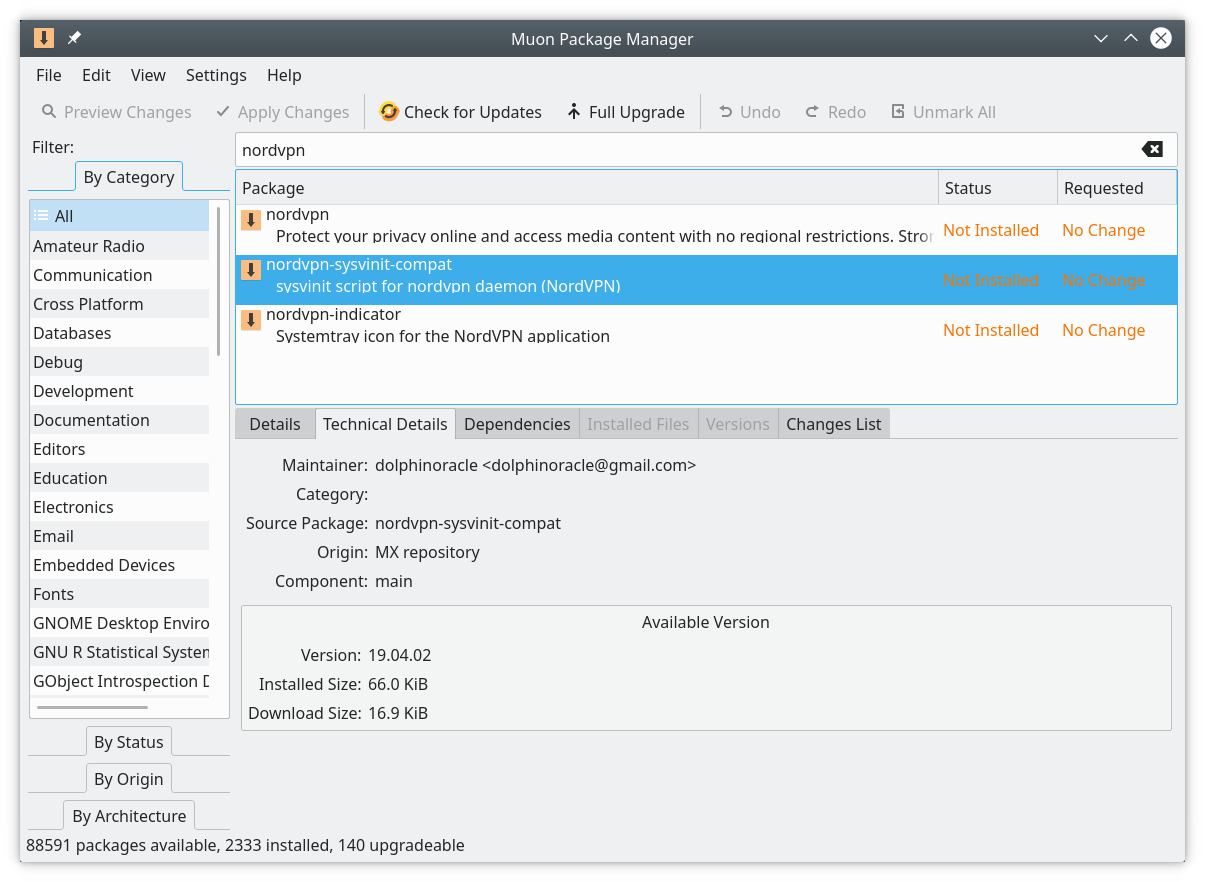Modern Times, Here I (Slowly) Run Away From You
Four months ago, I said I’ll switch from Windows 7 to a pure Linux machine. At some point, I said I’ll install Neptune 6.5 (basically Debian 10 with a few tweaks), but here I am, still hesitating. What gives?
The fault is entirely mine. Maybe I’m lazy, or maybe the coronavirus crisis demotivated me more than I thought it would, as I still have to do some stuff before being able to completely switch to a Linux-only environment. I’m still not sure about the Linux equivalents of the software I need and I’m used to from Windows; or about which of them work with WINE; but I also hope that I wouldn’t need to install the whole mess of gazillions of programs I’m still using under Windows, provided that some of the unfinished stuff gets finished prior to giving up Windows on this laptop. So the target date moves to November 1st.

In the meantime, I tested a lot of live distros, recently with the help of Ventoy. You see, the whole bunch of idiots who test a Linux distro in a virtual machine never know whether a shiny, nice-looking distro really supports their hardware as it should, because the virtual machine only shows a standard and unrealistic hardware. Back in June, I discovered that for many distros–and especially those based on Ubuntu–supporting an Intel HDA based on Realtek ALC282 is rocket science, so that the system wouldn’t detect when I insert the headphones. (The idiocy of requiring software to switch between a loudspeaker and some headphones appeared when they stopped using the hardware-only solution.)
Many more distro tests later–including the *buntus 20.10 Beta–it looks like having Debian as a base is the most reliable thing today. This is not for love of Debian: all the open-source communities are populated by morons, rednecks and, more recently, politically-correct shitheads (read about how transgender people are superior to everyone else in Debian; or how a very decent person needed to quit Debian’s KDE Team). What I need is something that works and that gives me enough flexibility.
Well, of course, when most people seem to embrace Windows 10, I might be running against the flow:

Well, knowing that the #1 distro is Ubuntu (don’t trust Distrowatch; a total noob wouldn’t have heard of MX Linux or Manjaro; and Mint is less and less popular, except maybe in the UK), and that Ubuntu is using GNOME3, which only makes sense either when on a touchscreen or when the user is totally retarded, there’s no wonder Linux has such an insignifiant market share.
But I’m not going to eat all the shit that they want to make me swallow. I won’t surrender to Windows 10, and I won’t surrender to GNOME3 either.

I didn’t thought I’d succumb to KDE Plasma 5 either, given the long years of only using XFCE, MATE and occasionally Cinnamon. It was only Neptune 6.5 that persuaded me that this desktop environment is finally usable, stable and not ugly.
Enter MX Linux. Yes, I always said I’d never try it, because it’s ugly. The website is ugly. The logo is one of the ugliest I’ve ever seen, and they added it to every single wallpaper they ship. And, given that it’s the most popular distro on Distrowatch, this is a negative to me: I never use the most popular smartphone, I never use the most popular distro, I almost never watch the most popular TV series (because there is stupidity and poor taste in big numbers). But heck, given that I tried so many distros, and so few of them were supporting such a trivial thing as inserting some bloody earpieces in a fucking jack…
So here it is: both MX Linux 19.2 (XFCE) and the newer MX Linux 19.2 KDE work well. No significant bugs, headphones are OK, Bluetooth too, etc. etc.
First I tried the “traditional” XFCE edition of MX Linux. Conky aside, the menu seemed to be the ugliest thing around IMHO (wrong choice of colors), but I didn’t run into the issues experienced by Dedoimedo. It might be the difference between 19 and 19.2, or (most probably) the fact that I’d never use the abomination called the Plank dock.
MX Tools, which I wasn’t familiar with, is actually a great idea: much more comprehensive than any other set of post-install configuration tools ever encountered! (No, YaST2 is not a tool, it’s a nightmare.) And it conforms to my philosophy of OS install that is disregarded by many Linux distros, but also by FreeBSD or OpenBSD. It goes like this:
If a configuration script that takes 400 developer-hours to be created saves 2 hours of manual configuration to each person that installs the OS, therefore saving 200,000 hours per 100,000 installs, then this script must be written, and the OS should not be shipped without it.
Slackware had great install and configuration scripts from the beginning; OpenBSD and FreeBSD still don’t have anything near what Slackware had 25 years ago!
So let’s say MX Linux 19.2 is a good choice after all–pragmatically speaking. But somehow XFCE’s limitations are a bit bugging me, starting with the ergonomics of Thunar–which was replaced by Nemo in Peppermint OS, despite the distro not using Cinnamon, but a mix of LXDE and XFCE. So I had to try MX 19.2 KDE!
Yes, it worked just fine, each time for several hours in a row, with [non-persistent] updates and added packages, including nordvpn and nordvpn-indicator from Solydxk’s repos.

Yes, there’s something to be noticed in the screenshot aside: nordvpn-sysvinit-compat. That’s because in the systemd vs SysVinit Linux civil war, MX Linux was with the Confederates and refused to switch to systemd. While I agree that systemd has a rather complex architecture, it’s far from being one of the most complex parts of a Linux distro, and it has been adopted by virtually every decent Linux distro, except for Devuan, MX, and… Slackware.
Here’s what you need to know about systemd:
Yeah, the speech is by Benno Rice, a FreeBSD guy. FreeBSD guys are nasty people, and in the past they routinely insulted people (yours truly included), and it’s only ridiculous they hired a “diversity consultant”–most likely to make happy the LGBTQ+ (“white heterosexual males are toxic”) and BLM (“white people are genocidal”) communities. In the meantime, FreeBSD 12.1-RELEASE is a huge piece of crap, and whatever George Neville-Neil says is only good until you try to actually use FreeBSD on the desktop.
But the bit about systemd not being the devil is correct.
So, suppose I go bag and baggage into MX Linux, am I looking for trouble because of their idiocy to stick to SysV? If NordVPN needed a support package, surely there must be other apps with the same need, as long as they only know of systemd, or if they assume that everything based on Debian should have switched to systemd. And if MX doesn’t provide such a patch…
…then I could install their systemd-sysv package and switch the system to systemd! (I only wonder how buggy might this be.)
I guess I’m going to sleep on it for a while: MX KDE, or Neptune? If MX allows me to install on JFS partitions… that’s a winner. (The installer suggests it accepts JFS partitions.)
All this being Debian stable… how about outdated or missing software? Not the latest KDE Plasma 5.20, mind you, but really useful software–not the DE itself.
Say, I noticed Linux Mint does have Celluloid, whereas MX Linux 19.2 doesn’t. That’s Ubuntu vs Debian, right? And Celluloid in Debian is only in testing and unstable, at version 0.18-2, the same version as in Ubuntu. But upstream there is… 0.20. What to do in MX or in Neptune?
flatpak remote-add --if-not-exists flathub https://flathub.org/repo/flathub.flatpakrepo
flatpak install flathub io.github.celluloid_player.CelluloidThe first line is actually useless in MX–flatpak is installed by default.
Then, say I noticed how GIMP 2.10.22 has been released, but only Debian unstable has it (not even Ubuntu!). The quick fix is to uninstall GIMP, then…
flatpak install https://flathub.org/repo/appstream/org.gimp.GIMP.flatpakrefSimply put, it’s pointless to be dogmatic about Flatpak when you really want a few programs to be in the latest version.
A last word about Debian and its derivatives versus *buntu and its cousins: there’s this myth of Ubuntu having a better hardware support than Debian, which is totally bullshit if you ask me:
- Raspberry Pi runs Debian, not Ubuntu (to be pedantic, it runs Raspberry Pi OS, formerly called Raspbian).
- The various firmware-nonfree packages present in Debian* (non-free) cannot be found in Ubuntu. (*all present on the Neptune 6.5 live/install media)
- While Ubuntu patches almost all the source packages it gets from Debian, I examined some such patches, and sometimes they can be terribly idiotic, reverting some changes unexpectedly from an update to the next one, and adding more bugs than expected.
Oh, since we’re at Debian-based: LMDE 4 Debbie (Linux Mint Debian Edition) is a no-go. Beyond the bland theme and rather ugly font rendering, and an unexplainable fact that it doesn’t sense my headphones, their handling of bugs is pathetic: the LMDE 4 release notes mention this:
System won’t boot if installed with XFS
If you choose XFS as the filesystem, the system won’t boot after the installation.
The cause of the problem and a workaround are described on this bug report.
But the bug report ends with this:
Clement Lefebvre (clementlefebvre) wrote on 2014-09-01:
Fixed for upcoming LMDE 2 Betsy.
Changed in linuxmint:
status: Confirmed → Fix Released
Heck, we’re in 2020, not in 2014, and in LMDE 4, not in LMDE 2, and instead of reapplying the fix, they just linked to the old bug report? Wow, how thoughtful of them! (The same way Clem censored a comment of mine on his blog without approving not even a word of it.)
While Mint might be friendlier than Ubuntu (the simple fact that there’s no GNOME3 edition helps a lot!), it’s not with fewer bugs. The mentality is the same: we don’t fix it if we don’t feel like doing it.


The rendering of text in Kate in (top-to-bottom) Neptune, MX KDE, and LMDE4, with full hinting and without color subpixel rendering, zoomed at 200% without optimization (if it’s blurry, that’s because of the scaling, not only because of the width of the container, but even if you’re opening the picture at the original size, it might get scaled up by the system):
I’d say Neptune has a better rendering than MX, but maybe it’s just me. (Notice how in LMDE4 Cinnamon, the grayscale settings are ignored, and Kate uses the cretinoid RGB subpixel rendering that some idiot invented years ago, because black on white should use the LGBTQ+ rainbow instead of shades of grey, right? When you print with black ink on paper, does it get RGB instead of greys, you fucktards?)
Provisional additional notes, after some extra hours of running both MX KDE and Neptune:
• MX seems slightly buggier than Neptune.
• Neptune has better default settings here and there (fonts in Konsole and Kate, etc. etc.), but it lacks the MX Tools. Which one to choose?
• For a decent KDE experience, Neptune only requires the change of “Click behavior” (Settings, System Settings, Desktop Behavior, Workspace) from single-click to double-click, but MX KDE also needs to have the top-right desktop hamburger menu removed (Right-Click, Configure Desktop, Tweaks, uncheck “Show the desktop toolbox”). On the other hand, MX Tweak includes a simpler way to switch between single and double clicks (MX Tweak, Plasma, uncheck “Enable single-click”). Oh, and it also needs MX Conky, Stop.
• FreeOffice 2018 for Linux (the free edition of SoftMaker Office) installs right away on Neptune, because it comes with
libgl1-mesa-glxpreinstalled, whereas on MX it will fail (unsatisfied dependencies) until the user will manually install the missing package.• In the live session, MX needs sometimes 10-20 seconds to save some settings, which is weird. I also had at some point the KDE panel (everything: the taskbar, the menu and the widgets) unresponsive for slightly more than one minute, something that I never encountered in Neptune. But in Neptune, Muon has issues in the live session, whereas it works perfectly in MX.
• MX has the disadvantages of sticking to SysV, and should I need to switch to systemd, the possible bugs are unforeseeable. But it also has a huge community (forums, etc.), whereas Neptune’s forums are a joke, and its userbase seems tiny. Of course, being less different to Debian than MX, one could just use Debian’s community for answers.
• Regardless of which distro is better and why, it’s a bit depressing to see that many Windows programs that run under Wine are not fully functional for one reason or another. It seems I really have to finish while still under Windows the (aforementioned but unspecified) tasks I wanted to finish before switching to a Windows-free environment.
• Too bad there aren’t many more Debian derivatives that don’t add much to Debian and don’t change much in it (so that e.g. my headphones work without the need of a tweak, which is not the case in SolydXK), so I could have a larger choice. Sigh.
Ah, I forgot to test Netrunner 20.01, another Debian 10 derivative. Well, it works well, and it’s only a minimal set of customizations atop Debian stable. Both Netrunner Core and Netrunner Desktop support my headphones (only the icon changes, the text under the icon still reads Speaker):
Another thing I noticed about the various Debian derivatives: the default kernel version:
• 4.19 in Debian stable, Netrunner, SolydXK, MX (Xfce).
• 5.6 in Neptune, MX KDE.
Strange choices. Well, 5.6 is in backports, one can switch to it later.
I wasn’t paying attention to it, but Xfce 4.16pre1 was released one month ago («If everything goes as planned Xfce 4.16 should be released by November!»), and it includes a number of visual changes.
Testing it on a live system is not trivial, as the only Live ISO coming with Xfce 4.16pre1 is… Auxtral, more exactly auxtral_2.6-xfce416Pre1R-experimental-08101020_amd64.iso.
Unfortunately, this distro is totally useless: zero support for my Wi-Fi chip, zero support for laptop keys (e.g. I cannot adjust the brightness), and generally I can’t see any reason for anyone to use it instead of Debian.
Oh, this experimental build includes Xfce 4.16pre1 packages built for Xubuntu, but they’re OK:
Nothing to write home about.
I forgot to mention that in the Neptune live session, Chromium crashes all the time. All the other Debian live derivatives use Firefox, which never crashed on me in the live session.
Just sayin’. Firefox is still the browser of choice, even more now that Chrome is associated with Microsoft.
In final o sa incropesti propria-ti distributie si POATE vei fi multumit.
Do I look like someone willing to waste my time that much?
Here’s something to read for you: The Year of the Linux dissatisfaction.
Make sure you also read More reading comprehension issues in Linux and, for historical context, Linux 2017 – The Road to Hell.
BONUS: Archived opinions from 2007: The Sorry State of Open Source Today.
Dedoimedo stopped being relevant long time ago. I’m actually surprised that anyone serious reads his reviews… He is typical example of OSS “mercenary”, which is quite strange considering his science-related educational background.
Anyway, you really know how to be an “asshole” (and do not get me wrong – I really like this when it comes to your blog posts), but it is quite incredible the amount of your time investment in testing and fooling around with marginally important (actually completely unimportant) distros. What the hell is Neptune? How many daily Neptune users are there – 5-6? Is it really possible that you cannot achieve the same by using standard Debian (or any other sane distro) with few tweaks here and there?
You’re mean to Dedoimedo; but yes, Debian is the answer. Say, debian-live-10.6.0-amd64-kde+nonfree.iso
Why the JFS?
Because I want so.
Oh, okay… Let’s try again then – is there any particular technical background for this choice or is it simply matter of an (old) habit… or something else?
It’s simple, fast, and proven. I liked it 25 years ago, I’d like to be able to use it now too.
I mentioned Celluloid as an example of something I might want to install as a Flatpak in Debian stable. There can be other Flatpak candidates too. I don’t care much about the latest KDE Plasma 5.20.2, but I might want Krita 4.4.0 instead of 4.1.7. Or GIMP 2.10.22 instead of 2.10.8, and especially Inkscape 1.0.1 instead of 0.92.4.
Note that the latest Krita isn’t available in either of Debian Sid and *buntu 20.10, so…
Inkscape, GIMP, Krita ? Oh, you are an artist ! 😀